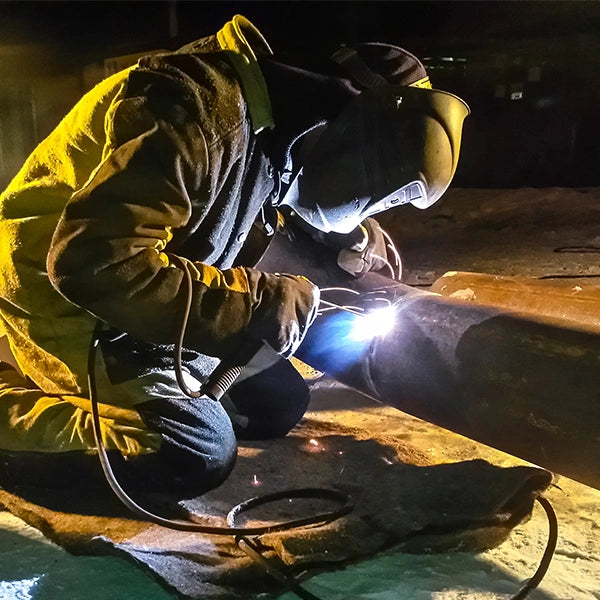Achieving Welding Excellence: Introducing the Tricks of WPS Implementation and Optimization
In the world of welding, achieving quality is a pursuit that rests on the precise execution and optimization of Welding Procedure Specs (WPS) These foundational files offer as the backbone of welding operations, determining the procedures and criteria required for generating high-grade welds continually. Nonetheless, the keys to unlocking the complete potential of WPS exist not only in comprehending its value yet additionally in mastering the complexities of its execution and optimization. By delving right into the crucial elements, techniques, difficulties, and ideal methods associated with WPS, a world of welding excellence awaits those that want to discover its midsts.
Importance of WPS in Welding
The Importance of Welding Treatment Specifications (WPS) in the welding industry can not be overemphasized, acting as the backbone for guaranteeing consistency, quality, and safety in welding procedures. A WPS provides thorough instructions on just how welding is to be accomplished, consisting of necessary variables such as products, welding processes, joint layout, filler steels, preheat and interpass temperatures, welding currents, voltages, travel rates, and much more. By adhering to a well-defined WPS, welders can maintain harmony in their job, causing constant weld quality across different tasks.

Crucial Element of WPS
Going over the important elements of a welding procedure spec (WPS) is necessary for recognizing its duty in welding operations. One important element of a WPS is the welding process specification, which outlines the particular welding processes to be utilized, such as gas tungsten arc welding (GTAW) or protected metal arc welding (SMAW) By including these key aspects right into the WPS, welding treatments can be standardized, ensuring quality, performance, and safety and security in welding procedures.
Strategies for WPS Optimization

Secondly, training and certification of welding employees according to the particular demands of the WPS is vital. Giving comprehensive training programs and ensuring that welders are certified to perform treatments laid out in the WPS can lead to better welds and decreased rework.
Furthermore, leveraging innovation such as welding software and tracking systems can help in enhancing WPS. These devices can aid in monitoring variables, making sure specifications are within defined restrictions, and giving real-time comments to welders, allowing them to make prompt adjustments for boosted weld top quality.
Usual Challenges and Solutions
Dealing with barriers in executing the techniques for WPS optimization can prevent welding operations' performance and high quality. One usual challenge is insufficient training or understanding of the welding treatment specs (WPS) amongst the welding group.
Another obstacle is the lack of proper documentation and record-keeping, which is vital for WPS optimization. Without clear documents of welding specifications, products utilized, and inspection results, it becomes tough to recognize locations for improvement and make certain consistency in welding procedures. Carrying out a robust documents system, such as digital welding monitoring software application, can visit the site aid streamline record-keeping and facilitate information analysis for continual enhancement.
In addition, inconsistent welding tools calibration and maintenance can pose a substantial challenge to WPS optimization. Regular tools checks, calibration, and upkeep schedules ought to be stuck to strictly to make sure that welding parameters are precisely regulated and maintained within the defined tolerances (welding WPS). By dealing with these common difficulties with proactive remedies, welding operations can improve performance, quality, and total welding excellence
Ideal Practices for WPS Implementation
To make pop over here sure effective WPS implementation in welding operations, adherence to market criteria and meticulous focus to detail are vital. When launching WPS execution, it is essential to begin by thoroughly comprehending the details welding requirements of the job. This involves a thorough testimonial of the welding procedure requirements, products to be welded, and the ecological problems in which the welding will happen.
As soon as the needs are clear, the following step is to select the proper welding treatment that straightens with these requirements. This entails seeking advice from the appropriate codes and criteria, such as those given by the American Welding Culture (AWS) or the International Company for Standardization (ISO), to guarantee these details conformity and quality.
Furthermore, documenting the entire WPS implementation process is vital for traceability and quality assurance. Thorough documents must be kept regarding welding parameters, material prep work, interpass and preheat temperature levels, welding consumables utilized, and any deviations from the initial treatment. Regular audits and evaluations of the WPS can assist identify locations for improvement and make certain recurring optimization of the welding process.


Verdict
In verdict, the implementation and optimization of Welding Procedure Specs (WPS) is essential for attaining welding excellence. By recognizing the key components of WPS, implementing effective techniques for optimization, dealing with usual challenges, and following finest techniques, welders can make certain high-grade welds and secure working problems. It is important for experts in the welding sector to focus on the correct execution of WPS to enhance overall welding performance and accomplish preferred end results.
The Relevance of Welding Procedure Specs (WPS) in the welding sector can not be overemphasized, serving as the backbone for ensuring consistency, high quality, and safety in welding operations. A WPS offers in-depth guidelines on just how welding is to be carried out, including vital variables such as materials, welding processes, joint style, filler steels, interpass and preheat temperature levels, welding currents, voltages, traveling speeds, and more. One essential aspect of a WPS is the welding process specification, which describes the certain welding procedures to be made use of, such as gas tungsten arc welding (GTAW) or protected metal arc welding (SMAW) By including these key elements right into the WPS, welding treatments can be standard, making sure quality, performance, and safety in welding procedures.
It is necessary for specialists in the welding sector to focus on the correct execution of WPS to improve total welding performance and achieve wanted results.